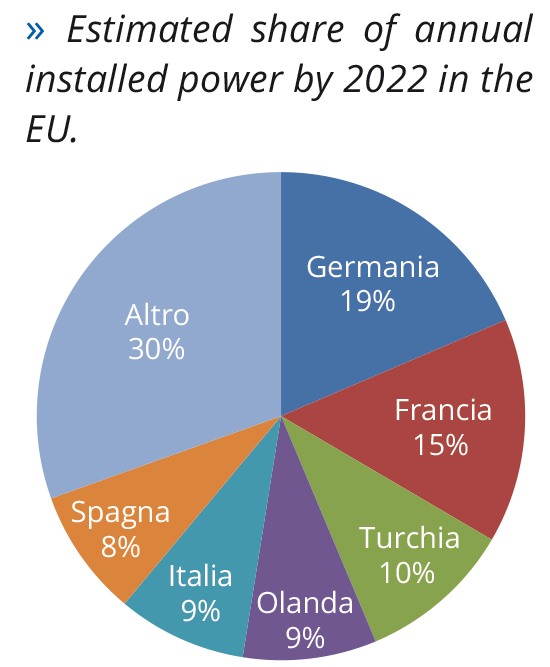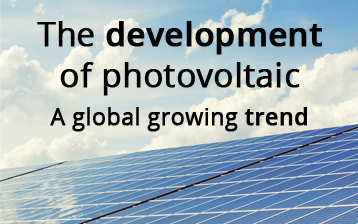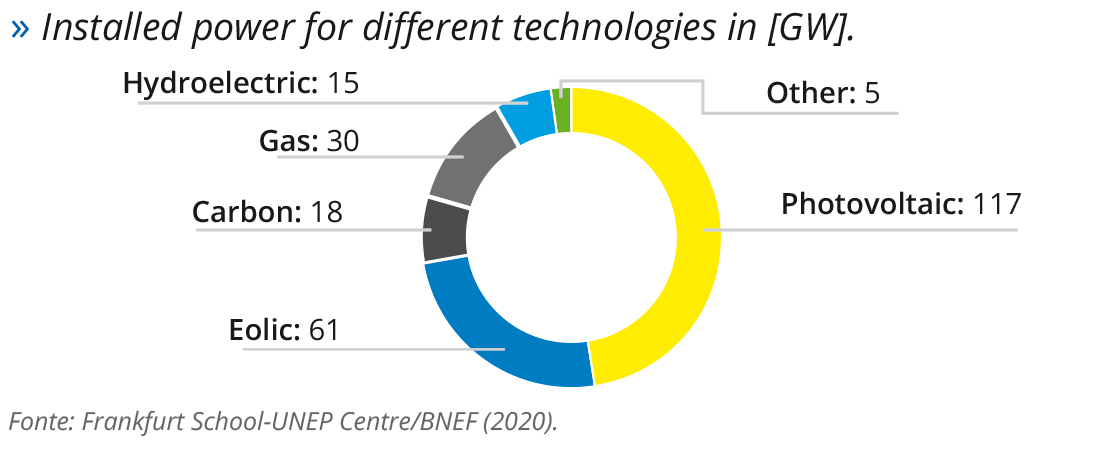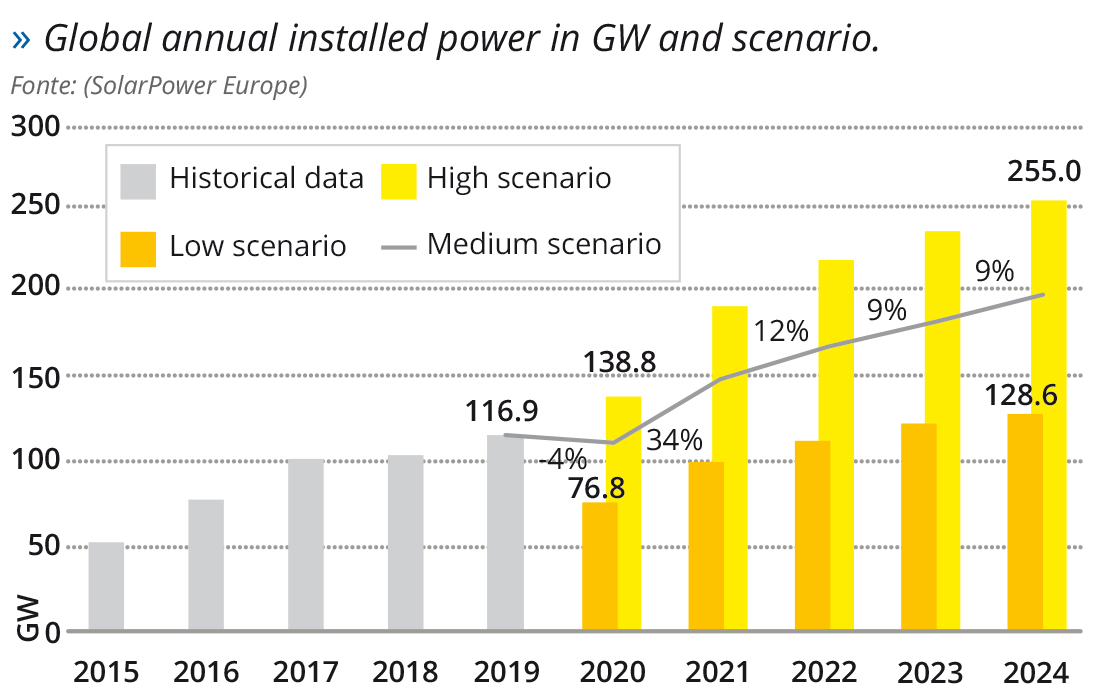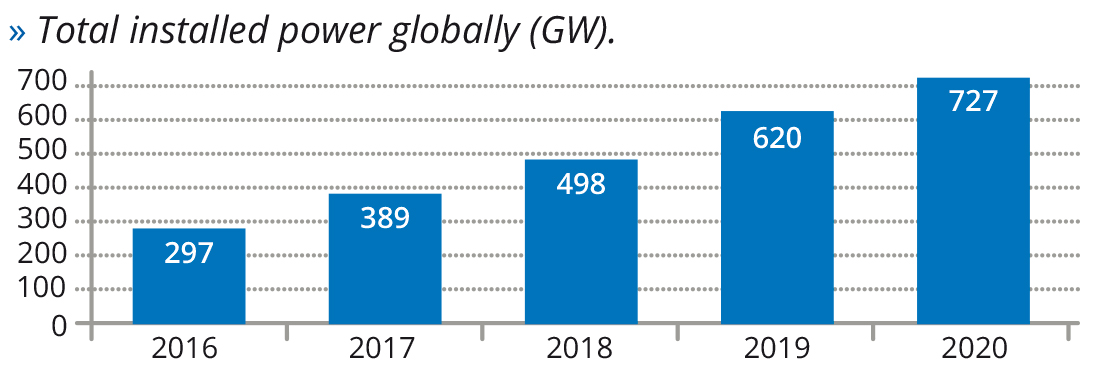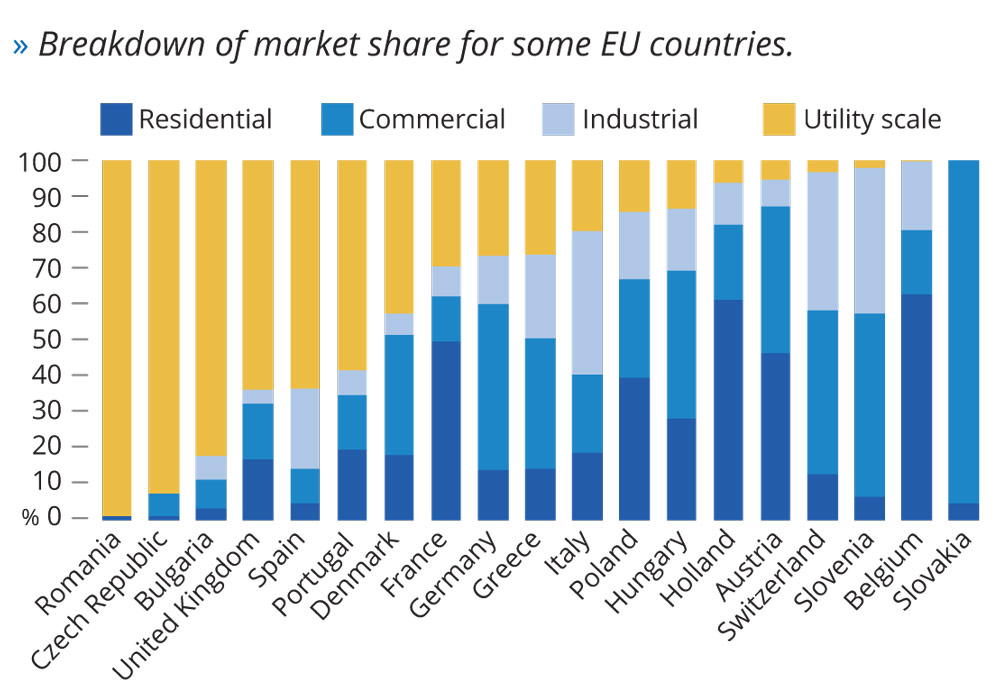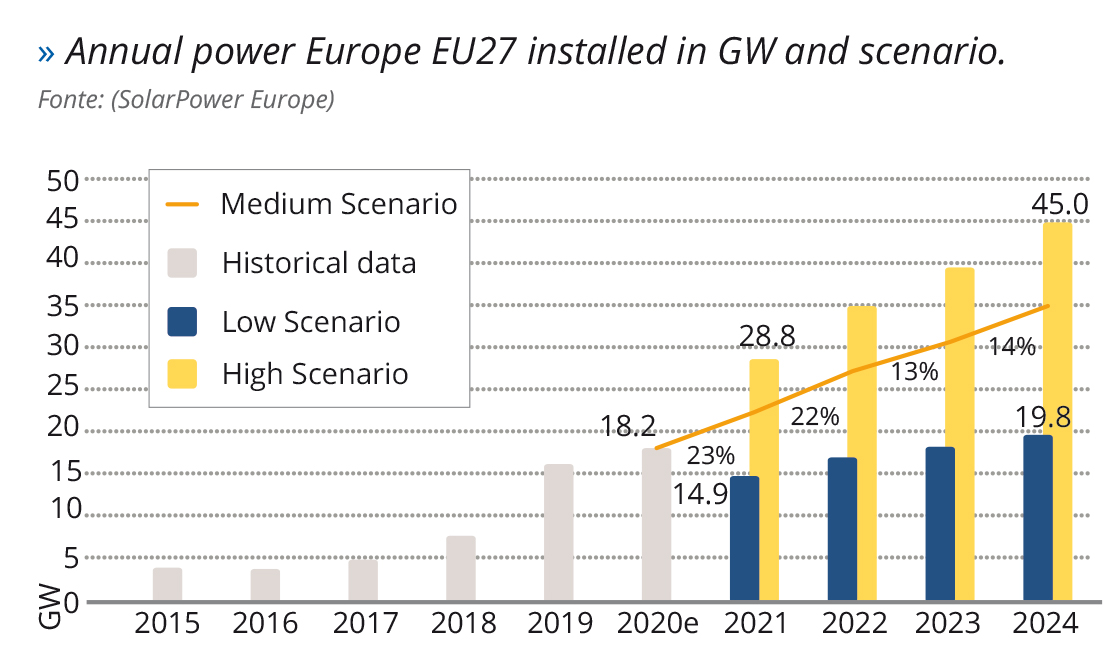Energy from photovoltaic sources is clearly showing all its strength and competitiveness, overcoming traditional sources, just think that the new photovoltaic capacity installed annually in the world exceeds the overall capacity of new installations of traditional fossil and nuclear sources.
It is estimated that the global power installed photovoltaics will reach 1TW in 2022. In Europe the share of energy covered by photovoltaics today is 5% but with prospects of very broad growth, coming to 15% in 2030.
Data of the market
The total global installed photovoltaic capacity in the world at the end of 2019 amounted to about 620 GW (it was about 500 GW in 2018, 400 GW in 2017 and 300 GW at the end of 2016) installed around 107 GW globally.
For the next few years, analysts estimate significant growth (which in absolute value could be around 120 GW/year), led by China which should see 40-50 GW installed per year, also with a view to reducing CO2 emissions in the country.
Solar as a real energy source
There are many countries that are looking at solar as the real energy source on which to base future investments.
There are many solutions to limit the use of fossil fuels as much as possible.
The European market
The photovoltaic situation in Europe is quite fragmented. The major players in the market in countries where there has been an incentive program are mainly utilities.
Italy on this is an exception, below are the percentages for installations for the various sectors:
» 26% of residential buildings;
» 18% commercial;
» 20% industrial;
» 36% utility.
Despite the remarkable growth rates of recent years, there is still a long way to go for solar and renewables in general.
The share of energy produced from renewable sources has reached only 12.1% of the global total in 2017.
Development factors
The growth of photovoltaics in Europe will be boosted by the following factors:
» the regulatory objectives set by the Commission and the interventions of the individual states;
» by public tenders that have supported or replaced pure incentive schemes in many countries;
» from “self-consumption” plants, being a valid system to reduce energy costs.
